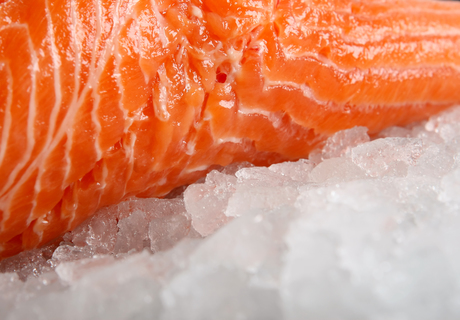How does Listeria grow on refrigerated smoked salmon?

One of the challenges associated with managing the pathogen Listeria monocytogenes is its ability to grow on food while it is refrigerated.
Now, researchers have found that Listeria grows on refrigerated smoked salmon by way of different metabolic pathways from those it uses when growing on laboratory media, even when the media was modified to have the same salt content and pH as the salmon.
To grow on the salmon, the bacterium upregulates genes that enable it to use two compounds from cell membranes — ethanolamine and propanediol — as energy sources. In an interesting parallel, L. monocytogenes, as well as Salmonella, is known to use those same genes to grow within a host — in the gastrointestinal tract, and on macrophages.
Principal researcher Teresa Bergholz, PhD said the research could lead to reduced incidences of food-borne illness and death.
"There may be ways we can use this information to control the pathogen both in foods as well as in infected people," said Bergholz, assistant professor in the Department of Veterinary and Microbiological Sciences at North Dakota State University, Fargo.
"Understanding how a foodborne pathogen adapts to environmental stresses it encounters on a specific food could allow food microbiologists to develop inhibitors of metabolic or stress response pathways that are necessary for the pathogen to grow or survive on that product.
"The information may also enable improved risk assessments, as virulence of a pathogen may be affected considerably by the stress responses and/or metabolic pathways used to survive on the food," said Bergholz.
Bergholz noted that ready-to-eat products typically have very low levels of contamination with L. monocytogenes, and that the bacterium must be able to grow on the product during refrigerated storage in order to reach an infectious dose.
The research has been published in Applied and Environmental Microbiology, a journal of the American Society for Microbiology.
Santa creates a spike in Australia's milk demand
Australian households are gearing up for the country's biggest night of dairy consumption,...
Not all processed fats are bad, study finds
A UK study into two types of industrially processed hard fats, which are widely used in the food...
Reimagined frozen foods on trend in next Cultivate program
Seedlab Australia has announced the next wave of FMCG businesses joining its 12th round of the...








